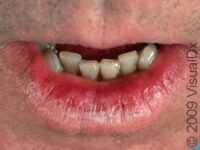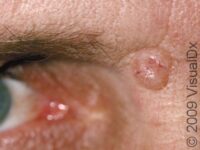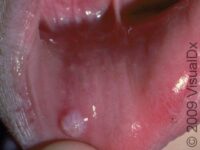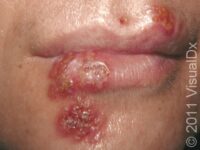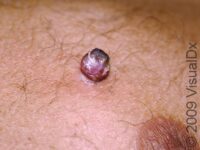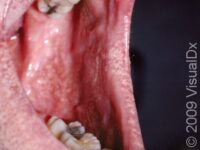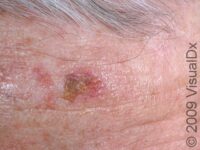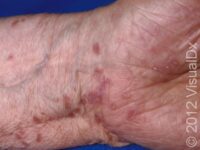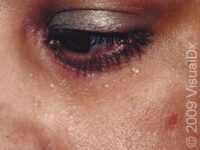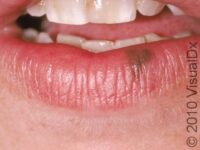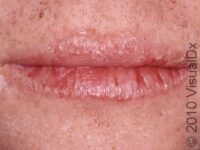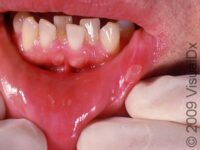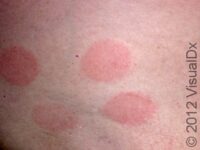Sores on the lips and mouth are common and can be harmless or serious health problems. One must be sure to have a persistent mouth sore examined and diagnosed by an expert, because cancer of the lips with a basal cell or squamous cell carcinoma is common, particularly in older patients. Basal and squamous cell cancers can be symptomless, or can bleed and be sore. Patients who have sun-damaged lips, known as actinic cheilitis, are at higher risk for skin cancer of the lips. Dark brown or black single flat spots are usually benign oral melanotic macules, but as with any dark skin lesion, one needs to make sure that the lesion is not a melanoma.
Common benign lesions on the outside of the lips include rashes due to allergic contact dermatitis, chapped lips, warts, Fordyce spots, herpes simplex, and milia. Sometimes people become sensitive to allergens touching the lips such as lanolin in lip balm or ChapStick®; even eating mangoes can cause the lips and skin around the lips to break out in a rash. Fordyce spots are a term for normal oil glands (sebaceous glands) of the lips; sometimes people notice them for the first time and mistakenly think the spots represent a skin disease. Milia are very common little white cysts that can occur on the border of the lips or anywhere on the face. Cold sores, or herpes simplex, are also called “fever blisters.” People frequently experience tingling or itch before the small blisters of a cold sore come out. Herpes is a recurring viral infection.
Inside the mouth, persistent white lesions can be concerning. Oral lichen planus is a benign condition of the inside cheeks, lips, or tongue. This diagnosis should be made by a professional, because white lesions inside the mouth can also be squamous cell carcinoma. A common cause of white lesions in the mouth is oral candidiasis, which is a yeast infection. Candidiasis is more common in people who recently took antibiotics, in diabetics, and in immunocompromised patients.
